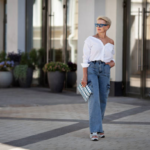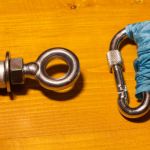Flyaways – those unruly strands of hair that stand up defiantly on the top of your head – have perplexed many of us. You might find yourself facing a halo of these rogue strands, especially on days when you aim for a sleek and smooth hairstyle. One common concern people share is wondering, “”Why do I have so many baby hairs on the top of my head?”” These short strands, typically known as baby hairs, along with static electricity, frizz, and broken hairs contribute to the appearance of flyaways. This article delves into the reasons behind flyaways, what causes flyaways, and offers insight into how you can tame them, nurture your hair, and possibly prevent their occurrence with the right care and knowledge.
Understanding Flyaways: The Basics
What Are Flyaways?
Flyaways are hairs that have become separated from the usual hair pattern and stand up or curl away from the rest. They can occur due to a myriad of reasons, such as static electricity, split ends, hair damage, or the growth of new hair, sometimes referred to as ‘baby hairs sticking up on top of head.’ These indocile strands can be more noticeable in certain hair types or under specific circumstances and are often a sign of hair needing a little extra attention.

Common Causes of Flyaways
The reasons behind flyaways can vary greatly, ranging from environmental factors to personal hair care habits. “”What causes flyaways?”” you may ask. Here, we outline some common culprits:
- Static Electricity: Dry environments can lead to a buildup of static electricity in your hair, causing strands to repel each other. This is often exacerbated in the colder months when indoor heating can dry out the air and, subsequently, your hair.
- Damaged Hair: Chemical treatments, heat styling, and rough handling can weaken hair cuticles, leading to breakage. Broken hairs are more likely to stick up and stand out from the healthier, longer strands.
To give you a clearer picture, let’s consider the following table summarizing key contributors to flyaways:
| Factor | Description | Preventative Measures |
|---|---|---|
| Static Electricity | Caused by dryness and friction, leading to hair repel. | Use anti-static sprays or humidifiers. |
| Hair Damage | From over-styling and harsh chemicals. | Reduce chemical processes and heat styling. |
| Humidity & Weather | Moisture in the air causing frizz and texture changes. | Use weather-appropriate hair products. |
| Genetics & Hair Type | Natural predisposition to frizz or fine hair. | Embrace and adapt care to your hair type. |
Environmental Factors and Your Hair
How Humidity Plays a Role
Humidity levels in the air play a significant role in the behavior of your hair. Moist air causes hydrogen bonds to form between water molecules and the proteins in your hair, leading to frizz and, consequently, flyaways. This change in the hair structure often results in an unruly and volumized appearance, making it difficult to manage even with the best product for flyaways on top of head.
The Impact of Weather Extremes
Extreme weather, from the heat of summer to the cold of winter, can also have a significant impact on your hair’s condition. During winter, the lack of moisture both outdoors and indoors due to heating systems can sap the moisture from your hair, making it more prone to static and flyaways. Conversely, summer’s scorching temperatures may lead to increased scalp sweating, excess oil, and a different kind of frizz that could contribute to those pesky stray hairs.
Hair Health and Maintenance
The Importance of Proper Hair Care
Maintaining hair health is paramount when combating flyaways. Proper hair care routines can strengthen hair, preserve moisture, and maintain smooth cuticles. This involves gentle handling, regular conditioning, and choosing the right products for your specific hair type, which is especially important when searching for the best product for flyaways on top of head.
Choosing the Right Hair Products
Selecting hair care products isn’t one-size-fits-all; it’s essential to choose products designed for your hair’s unique needs. When people search for the best product for flyaways on top of head, they’re typically looking for something that can tame those stubborn strands without weighing down their hair. Moisturizing shampoos and conditioners can be a great starting point for most hair types, and serums or leave-in treatments can offer an added layer of protection, along with products containing silicone that help smooth hair cuticles and reduce static, which can in turn minimize those unwelcome flyaways.
Hair Washing Techniques and Tips
- Use lukewarm water, as hot water can be too harsh on your scalp and hair.
- Focus shampoo on the scalp where oil buildup is most prevalent.
- Gently massage the scalp to remove buildup without causing damage.
- Condition the mid-lengths to ends, avoiding the roots to prevent greasiness.
This approach ensures that your hair is cleaned effectively without overstripping or under-cleansing, which can contribute to both grease and flyaways. Following these steps with a cold water rinse can further help by closing the cuticles, thereby boosting shine and assisting in flyaway management.
Hairstyling Habits Contributing to Flyaways
The way you style your hair can inadvertently increase the number of flyaways. Harsh brushing, tight hairstyles, and frequent use of heat tools can all play a part in hair damage and the creation of flyaways. It’s important to use tools that minimize damage, such as wide-toothed combs or brushes with natural bristles, and to avoid pulling hair too tightly into styles that can cause stress on the hair shaft and potential breakage.
The Effect of Heat and Chemical Treatments
Heat and chemical treatments are common factors that compromise hair health, leading to dryness and breakage. Excessive use of hair dryers, straighteners, curling wands, and chemical relaxers or dyes can strip the hair of its natural moisture and weaken the strands. Incorporating heat protectant products and limiting the frequency of chemical treatments can help to preserve hair integrity and reduce the chances of flyaways.

Dietary Influence on Hair Condition
Nutrients Essential for Healthy Hair
Believe it or not, what you eat has a profound impact on your hair’s health and appearance. Essential nutrients like protein, vitamins A, C, E, and the B-vitamin biotin are crucial for strong, healthy hair growth. Omega-3 fatty acids found in fish, nuts, and seeds are important for scalp health, and zinc from sources like meat and legumes can help prevent hair loss. Ensuring you receive a balanced diet with these nutrients can reduce flyaways by improving the overall condition of your hair.
Foods to Avoid and Foods to Favor
While some foods nourish your hair, others can potentially damage it, leading to more flyaways.
Foods to Favor:
- Leafy greens: They’re rich in iron and vitamins.
- Eggs: A great source of protein and biotin.
- Salmon: Contains omega-3 fatty acids, which promote hair growth.
Conversely, it’s best to avoid excessive sugars, refined carbs, and high-glycemic-index foods as they can trigger hormones that lead to scalp inflammation and ultimately damage hair follicles.
Long-Term Solutions and Quick Fixes
Treatments to Reduce Flyaways
For long-term health, consider treatments like keratin therapy or regular deep conditioning masks. These treatments infuse hair with smoothing and strengthening ingredients, helping to align those flyaways along with the rest of your hair. Additionally, you might try natural oil treatments such as argan or coconut oil to provide moisture and nourishment, which, over time, can improve the texture of your hair.
Day-to-Day Tips for Managing Flyaways
Incorporate the following into your routine for daily flyaway management:
- Use a toothbrush or mascara wand spritzed with hairspray to gently smooth down flyaways without affecting the rest of your hair.
- Regularly trim your hair to avoid split ends, one of the chief contributors to flyaways.
Keeping a mini bottle of hair serum or a few dryer sheets in your bag for on-the-go touch-ups can also be quite helpful for a quick fix when those stubborn hairs come loose.

Conclusion: Embracing Your Unique Hair Texture
In conclusion, the journey to understanding and managing flyaways leads us not only to the best products or practices but also to a more profound acceptance and appreciation for the unique nature of our hair. While you can, and should, aim for healthy hair practices to reduce flyaways, it’s equally important to embrace the individuality of your hair texture.
FAQs
1. What is the best product for taming flyaways on top of my head?
Look for lightweight smoothing serums, natural oils such as argan or jojoba, and anti-static sprays designed for hair. The “”best”” product varies depending on your hair type and condition, so you might need to experiment to find your perfect fit.
2. What actually causes flyaways?
Flyaways can be caused by static electricity, broken hairs from damage, dry weather conditions, and even natural hair growth patterns, including baby hairs. They are also often a sign of a need for a more tailored hair care routine.
3. Why do I have so many baby hairs on the top of my head?
Baby hairs are new, fine hairs growing in, and their abundance could be due to your hair growth cycle, recent hair loss, or regrowth. They’re entirely normal, but if you’re seeing more baby hairs than usual, it could be worth discussing with a dermatologist or trichologist.
4. Can I prevent flyaways?
While you can’t prevent all flyaways, you can minimize them through proper hair care, maintaining hydration, regular trims, and avoiding harsh chemical or heat treatments. Also, employing the right diet and hair products will go a long way in keeping them at bay.
5. Are there any hairstyles that help minimize the appearance of flyaways?
Yes, sleek buns and ponytails can help keep flyaways under control. Also, using a bit of hairspray or pomade to smooth down flyaways when styling can be effective. However, make sure your hairstyles aren’t too tight, as this can lead to more breakage and, subsequently, more flyaways.




